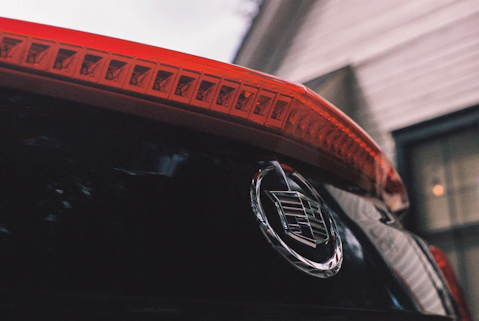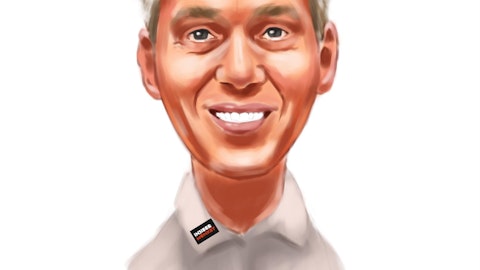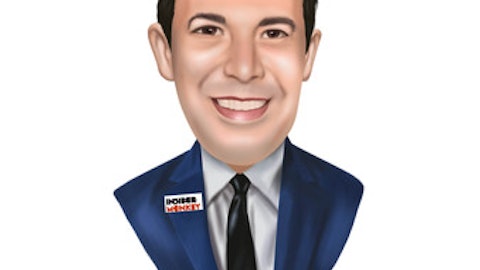This past decade has been an insane run for technology. As much as our lives may not have drastically changed a-la The Jetsons, there’s no denying the unsettling speed that is the wild-wild west of tech. If we take a look at where we are now, we’re still driving cars. We’re still going to stores. For the most part, we’re still living the same lives that people lived 20 years ago.
Some would say that technology has hit a standstill. However, this is not the case at all. With data collection and artificial intelligence, we’re simply in a latency period. The shift is bound to come. As you read this, we’re in the middle of a revolution in the auto industry. Cadillac just rolled out their new feature: The Super Cruise.

Super Cruise may not have been on the front cover of every newspaper. This may not have topped the trending list on social media platforms. But this is an absolute gamechanger. With this kind of tech, a lot of questions are bound to come up. We have the proverbial: “will it work?” But above all, the question on all of our minds is: “is it safe to use?” That, no matter how much Cadillac may say it is, is a topic worth exploring. With that, we’ll check the numbers, compare it with the competition, and get to the bottom of this strange and fascinating world of artificial intelligence and data-driven safety measures on something as critical as hands-free driving.
What Is Super Cruise?
Before we get into any of the issues surrounding it, we have to answer the question: “what is Super Cruise?” There are so much hype and mystery around this kind of tech, we kind of assume that it’s just another addition to the features of an average car. As much as that’s true, the ingenuity and the futuristic foresight of Super Cruise elevates it to that of a science fiction movie. It’s a Cadillac that can handle itself. It’s the halfway point between full autonomy and an individual handling the wheel. It’s a user-friendly introduction to the future of driving. Here’s how it works.
Super Cruise Components
Super Cruise isn’t the name of the technology. Its name is a combination of two different technologies interfacing with each other. The first one is called LiDAR, the bright, new brainchild of augmented reality tech. The other is a series of sensors and cameras that work together to create a three-dimensional image for the internal computer to base the decision off of. When you separate the two, making them function independently, they simply do not create the kind of full view required to operate a self-driving system. They’re just signal inputs and cameras. But together, they can map out an entire area in a fraction of a second. It does this at lightning speeds, attempting to mimic the human brain’s speed and accuracy in motion through space. First, let’s talk about LiDAR.
The LiDAR System
LiDAR, like most things in the tech world, is an acronym. It stands for Light Detection and Ranging. The basic concepts of LiDAR have been around for over half a century. The fully form concept was experimented with within the 1960s and widely implemented from the 1980s onward. Have you ever seen those 3D multi-colored layouts that look like a more detailed version of SONAR? That’s LiDAR. They were first strapped onto airplanes and helicopters for surveying and exploring geospatial coordinates.
What it does, much like SONAR, is to use a pulse to gather information about the surrounding environment. Simply put, you set out a series of laser beams, and a sensor picks up the backscattering effect. That collection of returned pulses gets translated into a series of codes representing the layout of the land it’s scanning. The readout system can either be visual or, in the case of driving systems, contributing to an overall landscape for computer-based decision making. Mind you, all of this is happening in a fraction of a second. Technically the information reaches back to the sensor at the speed of light. It’s the readout and translation of the information that takes time.
But regardless, it’s to the point where it’s faster than the speed of human decision making. So if you strap that to the front and sides of a car, it’s going to have a real-time view of what the surroundings are like way better than just sight alone. It’s like having the most accurate eyes all around. So if there’s a pothole coming up, it’s going to get detected by the LiDAR. If there’s a kid with a red ball, the LiDAR is going to recognize that. Better yet, since everything is in a fraction of a second, it can compensate for massive speeds.
The Camera System
The cameras on the car have a few functions. The first is to confirm the LiDAR. The visual aspect of a camera can confirm the shape that the LiDAR forms. A computer is not going to recognize a loose shape as well as it’s going to recognize an image. So, the confirmation of visual works to give quality assurance to the fast data. The second camera, and quite possibly the most important one, is the one on the steering wheel. The biggest problem that autonomous driving has faced is the fear that people would just fall asleep on the wheel.
This, no matter how good the technology is, remains a major sticking point for lawmakers and safety officials. The Cadillac Super Cruise system only stays on if you’re paying attention. That’s done through facial recognition systems, and a camera pointed straight at you. If you’re drifting off, it will make a noise, and Super Cruise will shut off. This face recognition camera answers the question of who would be at fault or who would be responsible in the event of an autonomous vehicle accident. The onus is put on the driver and not the technology itself.
Social and Legal Issues
This issue of who is at fault and who is responsible is a massive debate in the legal world. It’s one that’s been discussed and ping-ponged back and forth since the introduction of the idea of autonomous vehicles. If you go here, you’ll quickly see there’s so much going on with this topic that it’s often difficult to separate the wheat from the chaff. The legal experts are fortunately siding with humans on this, so with adequate legal help, you can still be protected. You have talked of artificial intelligence and what that would mean relative to driving. You also have data going back and forth about accidents and the fallibility of human decision making. It seems as though only time will tell.
Privacy
What everyone can agree on is that there are massive issues with privacy and tracking. Does one want their car to be listening and recording everything that’s going on inside? Do we trust these massive corporations enough not to sell that data or metadata to the highest bidder? We’ve seen massive tech companies like Google and Amazon come under fire for their use of data. Could this Super Cruise System be a sly way for the declining automotive industry to get a cut of the multi-trillion-dollar data business? In the end, the data issue is a smaller piece of the average consumer’s work. There’s only one measure that people care about: are they safer?
A Case That They’re Safer
Ultimately, when we look at any kind of new technology being applied to motor vehicles, it’s in the realm of safety. Decades ago, seat belts became the industry standard. With that came the criticism that safety belts cause more harm than good. As we’ve seen time and time again, that kind of criticism is the necessary pushback needed to normalize good safety standards. You can’t just accept something flat-out. You can’t just “believe” science. You have to see it tested over a long enough timeline. So in the case of programs like Cadillac’s Super Cruise system, of course, it’s going to help cars become safer. But there also has to be some pushback. That’s fine. What the new system has to offer is a real-time look from an objective third-party system.
Human beings have a million things going on in their heads at any given time. We’re complex. We’re messy. We have to actively focus on something like driving to do it well. Even if we do it every day, every single one of us has either dozed off for a second on the wheel or been too preoccupied to see the sports car cutting us off. We’ve all been scared out of our wits behind the wheel. The software Cadillac rolled out takes away that big fear by adding an extra, computational, impartial party to the group. That’s the ultimate safety tool: an AI system that’s supposed to help you instead of taking over the driving experience. There’s great confidence that this system will reduce the number of accidents and cut the number of accidental deaths in half on a long enough timeline.
A Case That They’re Unsafe
For all the hype, there are still plenty of skeptics. According to them, the addition of the Super Cruise doesn’t make the car any safer. It just limits the number of good instincts a person can develop. There are good habits and bad habits while driving. But no matter what, the good has to be reinforced with time and practice. If you put an intelligent system in a car, you’re going to make a more coddled, uneducated, slower-thinking driver overall. What if someone were to start with the Super Cruise? That’s going to be feature plenty of parents will love for their kids. The safety of their kids is and should be number one.
But if they drive any other car, will they understand the spatial intelligence needed to go across six lanes of speeding traffic one by one? Will they be able to gauge the distance needed to brake adequately? Are they going to know the things that we consider second nature? That’s the biggest issue with technology in general. Some may argue that we have become more dependent on software and, therefore, less able to think for ourselves. Apply that to driving, and on a long enough timeline, we may see deaths rise again. That is, of course, unless every single person has an AI driving system.

Added Cost
Before anyone jumps in and buys the newest Cadillac for the Super Cruise system, it should be stressed that the service is not free. There’s a cooperation with OnStar that one must buy into that allows for you to have it. While each car is capable of doing it, there’s an extra monthly fee. Granted, it’s not very cost-prohibitive. It’s about $25 a month. Let’s face it; if you’re driving a brand-new Cadillac, you can afford $25 a month. But it may lead some to believe that this is just a big money grab. It’s a way to marry the online subscription model and the driving experience. Is it necessary? Is it that important to have Super Cruise in your car? The advertisements and the marketing sure seem to be pressing it. For a low fee of $25 a month, that is.
For experienced drivers, the Super Cruise is a godsend. Some so many people have to work attention-compromising hours and drive long distances. We don’t want those people on the road. We don’t want to be on the road with them. That’s a dangerous place. Yet, every morning at 7 am, and every evening at 7 pm, we have hordes of sleepy, possibly hungover, possible angry people filling the freeways. It’s nice to be able to let a robot take the wheel. It’s nice to be able to know that we can’t make sleepy, bad decisions. For that reason, the Cadillac Super Cruise will bring injury and death from car accidents down significantly. But will it last? Or will it just be a temporary fix to a problem that’s been plaguing modern society for two generations? Only time will tell.





